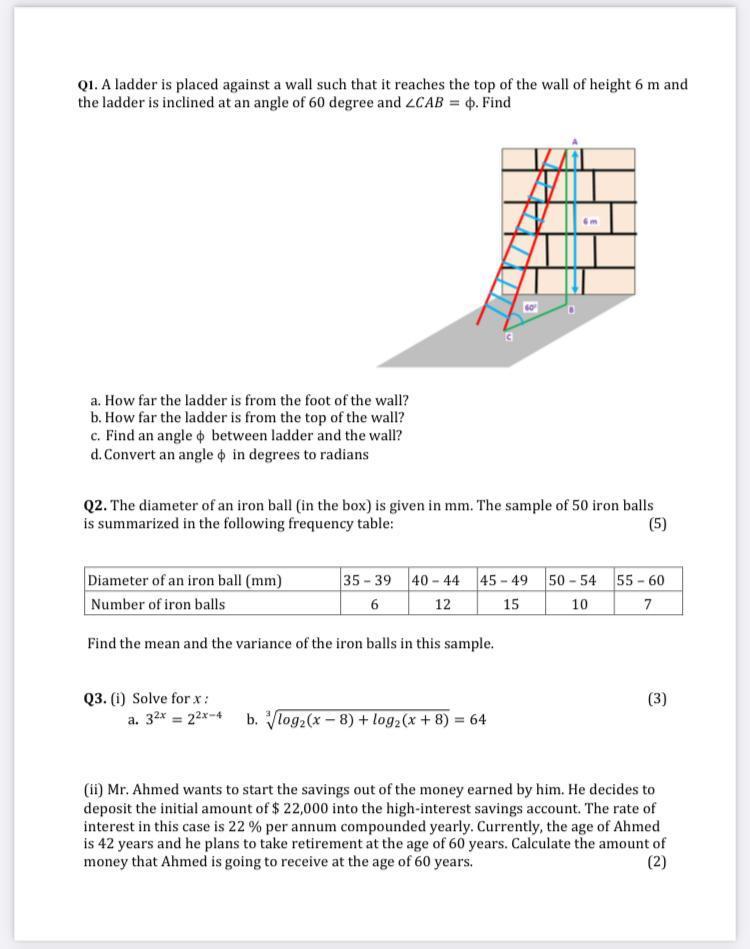The correct angle for a ladder is crucial for safety. It should be placed at a 75-degree angle.
This ensures stability and minimizes the risk of accidents. Ladders are common tools in both homes and workplaces. But, using them incorrectly can lead to serious injuries. Understanding the right angle is essential for safe ladder use. A 75-degree angle provides the optimal balance between stability and ease of use.
It’s simple to achieve: for every 4 feet of height, place the base 1 foot away from the wall. This rule keeps the ladder secure and prevents slipping. Whether you’re painting, cleaning gutters, or performing repairs, knowing this angle can keep you safe. Let’s explore why this specific angle matters and how to measure it correctly.

Credit: www.youtube.com
Ideal Ladder Angle
Using a ladder safely involves many factors. One key aspect is the angle. The right angle ensures stability and prevents accidents. So, what is the ideal ladder angle? Let’s find out.
The 4-to-1 Rule
The most common guideline is the 4-to-1 rule. This rule is easy to remember. For every four feet of ladder height, place the base one foot away from the wall. This creates a 75-degree angle. It’s a simple way to ensure your ladder stands firm.
| Ladder Height | Base Distance from Wall |
|---|---|
| 4 feet | 1 foot |
| 8 feet | 2 feet |
| 12 feet | 3 feet |
| 16 feet | 4 feet |
Importance Of Correct Angle
The correct ladder angle is vital for safety. A ladder too steep can slip and fall. One too shallow can bend or break. The 4-to-1 rule helps avoid these risks. It also makes climbing easier and more comfortable.
- Stability: The right angle keeps the ladder steady.
- Safety: Prevents slipping and falling.
- Comfort: Easier to climb and work.
Remember, always check the angle before using a ladder. It takes a moment but can save you from injury.

Credit: www.chegg.com
Choosing The Right Ladder
Selecting the correct ladder is crucial for safety and efficiency. A suitable ladder makes your tasks easier and reduces the risk of accidents. Understand the different types of ladders and their materials to make an informed choice.
Types Of Ladders
There are various types of ladders, each designed for specific purposes. Here’s a brief overview:
| Type of Ladder | Description |
|---|---|
| Step Ladder | Freestanding, ideal for indoor tasks. No wall support needed. |
| Extension Ladder | Adjustable length, perfect for reaching high places. Needs wall support. |
| Multi-Position Ladder | Versatile, converts into various configurations. Suitable for many tasks. |
| Trestle Ladder | Two-sided, allows two people to work simultaneously. Great for painting. |
Ladder Material
Ladders are made from different materials, each offering unique benefits. Choose the right material based on your needs:
- Aluminum: Lightweight and rust-resistant. Ideal for most tasks. Not safe near electricity.
- Fiberglass: Heavy-duty and non-conductive. Safe around electricity. More expensive.
- Wood: Traditional and sturdy. Good for indoor use. Susceptible to weather damage.
Consider the task at hand and the environment before selecting a ladder material. Safety is paramount, so choose wisely.
Setting Up The Ladder
Setting up a ladder correctly is crucial for safety. A well-placed ladder prevents accidents and ensures stability. Follow these steps to set up your ladder properly.
Ground Conditions
Before placing your ladder, inspect the ground. Ensure it is level and firm. Avoid soft or slippery surfaces.
| Ground Type | Recommendation |
|---|---|
| Grass | Use a board under the feet |
| Concrete | Ensure it is dry and clean |
| Gravel | Compact it well |
Securing The Ladder
Once the ground is ready, secure the ladder. Place it at a 75-degree angle. Use the 4:1 ratio rule. For every four feet of height, place the base one foot away from the wall.
- Ensure the top of the ladder rests against a sturdy surface.
- Use ladder stabilizers if needed.
- Double-check all locks and extensions.
Stabilize the base. You can use stakes or ladder stabilizers. This prevents slipping.
Final Check
Perform a final check. Ensure everything is secure. Climb the ladder slowly. Test its stability as you go.
Climbing Safely
Climbing a ladder safely is crucial for both professional and DIY tasks. Proper placement and usage can prevent accidents. One key aspect is the angle of the ladder. It should be placed at a 75-degree angle against the wall. This ensures stability and reduces the risk of slipping. Remember, safety is always the priority.
Proper Footwear
Wearing the right footwear is essential for ladder safety. Shoes should have non-slip soles. This helps in maintaining a firm grip on the ladder. Avoid wearing sandals or flip-flops. Closed-toe shoes provide better protection and stability. Ensure your shoes are clean. Dirt or mud can reduce traction.
Three Points Of Contact
Always maintain three points of contact when climbing. This means two hands and one foot, or two feet and one hand. It helps in maintaining balance. Avoid carrying tools or materials in your hands. Use a tool belt instead. This keeps your hands free for climbing.
Using these tips can greatly reduce the risk of ladder accidents. Always prioritize safety over speed. Taking a few extra minutes to set up properly can save you from injuries.
Common Mistakes
Placing a ladder at the correct angle against a wall is crucial for safety. Many people make common mistakes that can lead to dangerous situations. Understanding these mistakes can help prevent accidents and ensure a safe working environment.
Overreaching
One of the most common mistakes is overreaching while on a ladder. When you stretch too far, you risk losing your balance. This can cause the ladder to tip over. Always keep your body centered between the side rails of the ladder.
- Keep your belt buckle within the side rails.
- Reposition the ladder instead of stretching.
- Ensure the ladder is stable before climbing.
Incorrect Ladder Angle
Another frequent mistake is placing the ladder at the incorrect angle. The ideal angle for a ladder is 75 degrees. This angle provides stability and reduces the risk of falling.
To achieve this, use the 1:4 rule. For every 4 feet of ladder height, place the base 1 foot away from the wall.
| Ladder Height | Base Distance from Wall |
|---|---|
| 8 feet | 2 feet |
| 12 feet | 3 feet |
| 16 feet | 4 feet |
Using this simple rule helps ensure the ladder is at a safe angle. Incorrect angles can cause the ladder to slip or fall. Always double-check the angle before climbing.
Credit: www.quora.com
Maintenance And Inspection
Maintaining and inspecting your ladder is crucial for safety. Regular checks and timely repairs ensure that your ladder remains in good condition. Below, we explore key aspects of maintenance and inspection.
Regular Checks
Perform regular checks on your ladder. Inspect it before each use. Look for any signs of wear and tear. Check the rungs and side rails for cracks. Ensure the feet are secure and not worn out. Make sure all moving parts operate smoothly. This includes locks and hinges.
Use the following checklist for your inspections:
- Check for rust or corrosion.
- Ensure all rivets and bolts are tight.
- Inspect the ladder’s stability.
- Look for any bends or dents.
- Test the locking mechanisms.
Repairing Damages
Repair any damages immediately. Do not use a damaged ladder. Small cracks can lead to major accidents. Replace damaged rungs and side rails. Tighten loose bolts and rivets. Use only manufacturer-approved parts for repairs.
Follow these steps to repair your ladder:
- Identify the damaged part.
- Remove the damaged part carefully.
- Install the new part securely.
- Test the ladder for stability.
- Make sure all parts are tightly fixed.
Proper maintenance and inspection will extend your ladder’s life. It will also keep you safe.
Frequently Asked Questions
What Is The Best Angle For Ladder Placement?
The best angle for a ladder is 75 degrees. Use the 1:4 rule.
Why Should Ladders Be At A 75-degree Angle?
A 75-degree angle ensures stability. It reduces the risk of slipping.
How Do You Measure The Correct Ladder Angle?
Measure the correct angle using the 1:4 rule. Place the ladder base one foot out for every four feet up.
What Happens If A Ladder Is Too Steep?
A too-steep ladder can slip backward. This increases the risk of accidents.
Can A Ladder Angle Be Too Shallow?
Yes, a shallow angle can make the ladder slip out. It’s unsafe and should be avoided.
Conclusion
Setting ladders at the right angle ensures safety. Follow the 4:1 rule. For every 4 feet up, place the base 1 foot out. This provides stability. Always check the ladder’s position before climbing. Safety should be your priority. Regularly inspect your ladder for damage.
Use it on a level surface. Proper angle placement prevents accidents. Stay safe, follow these tips, and use your ladder with confidence.
Recent Posts
Maintaining clean gutters is essential for preventing water damage to your home, and choosing the best ladder for cleaning gutters can make the job much easier and safer. With so many options on the...
Best Ladder for Cleaning Caravan Roof: Top Picks for You Every Adventure!
Today we will discuss the best ladder for cleaning caravan roof. Cleaning caravan roofs is one of the crucial tasks.After many days, a caravan roof can get dirty by debris, dirt, and grime. These can...
